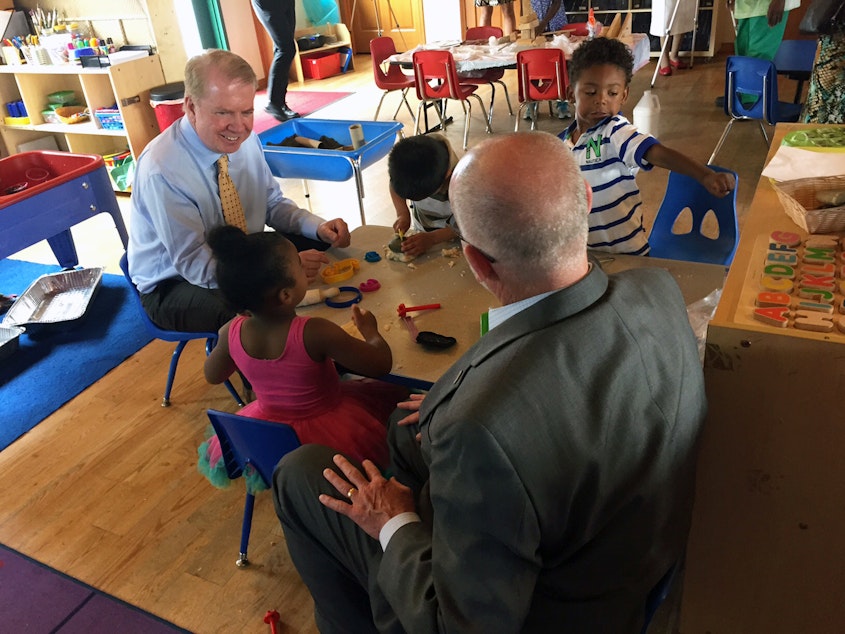Seattle Preschool Program won't be able to serve 2,000 kids after all

Parents tend to get sticker-shock when it’s time to pay for child care.
Now it’s the city’s turn.
The city of Seattle is scaling back plans for its subsidized preschool program, one year into the four-year pilot, citing the need to pay providers more than expected.
Department of Education and Early Learning Director Monica Liang-Aguirre said to entice and retain qualified providers, the city will need to pay them an average of 21 percent more in the second year.
"That was a clear message from our providers that, because of some of the programmatic requirements of the [Seattle Preschool Program], it was causing undue stress on some of our agencies. So we want to make sure that we’re not inhibiting participation in SPP because of lack of finance," Liang-Aguirre said.
Sponsored
Increasing payments to providers means cutting back the number of children the preschool program will ultimately serve.
The city had planned to ramp up the number of seats available each year, from 280 children in its first year to 780 preschoolers this fall.
The program met its first-year enrollment goal, but anticipates falling more than 150 seats short in its second year.
In its fourth and final year, the preschool program aimed to serve 2,000 children. That number has now been cut by almost 20 percent.
The Seattle Preschool Program is funded by a four-year, $58 million property tax levy. It's modeled after similar programs in other cities and meant to increase the number of low-income children who are ready for kindergarten.
Sponsored
Families who earn less than 300 percent of the federal poverty level qualify for free tuition, while better-off families pay on a sliding scale.
The program struggled to attract enough qualified providers in its first year, in part because of its curriculum requirements. The city has since loosened the requirement that providers use approved curricula.

